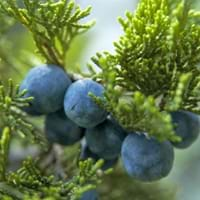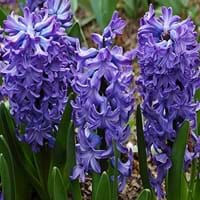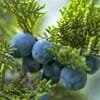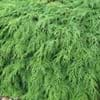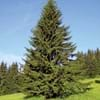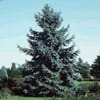Life Span
Perennial
Perennial
Type
Needled or Scaled Evergreen
Bulb or Corm or Tuber
Origin
Hybrid origin, North America
Mediterranean, Western Asia
Types
Not Available
Not Available
Habitat
Deciduous forests, Rocky areas, rocky outcrops
Mediterranean region
USDA Hardiness Zone
3-7
4-9
Sunset Zone
A2, A3, 1a, 1b, 2a, 2b, 3a, 3b, 4, 5, 6, 7, 8, 9, 10, 11, 12, 13, 14, 15, 16, 17, 18, 19, 20, 21, 22, 23, 24
21,22
Habit
Pyramidal
Clump-Forming
Flower Color
Brown, orange brown, Purple
White, Yellow, Red, Blue, Purple, Pink, Lavender, Violet
Flower Color Modifier
Bicolor
Bicolor
Fruit Color
Voilet
Not Available
Leaf Color in Spring
Blue
Green
Leaf Color in Summer
Blue Green
Light Green
Leaf Color in Fall
Blue Green
Several shades of Green
Leaf Color in Winter
Blue Green
Light Green
Leaf Shape
Scale-like imbricate
Long slender
Plant Season
Spring, Summer, Fall, Winter
Spring, Winter
Sunlight
Full Sun, Partial Sun
Full Sun, Partial Sun
Growth Rate
Medium
Medium
Type of Soil
Loam, Sand
Loam
The pH of Soil
Neutral, Alkaline
Acidic, Neutral
Soil Drainage
Well drained
Well drained
Bloom Time
Early Spring, Mid Spring, Spring
Early Spring, Spring, Late Winter, Indeterminate
Tolerances
Drought
Black Walnut Toxicity, Rabbit, Shade areas
Where to Plant?
Container, Ground, Pot
Container, Ground, Pot
How to Plant?
Cuttings, Seedlings
chipping, Offsets, scooping, Twin scaling, Vegetative
Plant Maintenance
Medium
Low
Watering Requirements
Does not require water in summer, Keep the Soil well drained, Medium
Medium
In Summer
Lots of watering
Lots of watering
In Spring
Moderate
Moderate
In Winter
Average Water
Average Water
Soil pH
Neutral, Alkaline
Acidic, Neutral
Soil Type
Loam, Sand
Loam
Soil Drainage Capacity
Well drained
Well drained
Sun Exposure
Full Sun, Partial Sun
Full Sun, Partial Sun
Pruning
Remove damaged leaves, Remove dead branches, Remove dead leaves
Remove damaged leaves, Remove dead branches, Remove dead leaves
Fertilizers
All-Purpose Liquid Fertilizer
All-Purpose Liquid Fertilizer, General garden fertilizer, Time release fertilizer
Pests and Diseases
Red blotch
Pests and diseases free
Plant Tolerance
Drought
Black Walnut Toxicity, Rabbit, Shade areas
Flower Petal Number
Single
Single, Double, Semi-Double
Foliage Texture
Medium
Medium
Foliage Sheen
Matte
Glossy
Attracts
Not Applicable
Insects
Allergy
Not Available
Asthma
Aesthetic Uses
Bonsai, Hanging Basket, Showy Purposes, Used for decorating walls, fences, gates, hedges, etc.
Beautification, Bouquets, Cottage Garden, Landscape Designing, Showy Purposes
Beauty Benefits
Not Available
Not Available
Environmental Uses
Air purification
Not Available
Medicinal Uses
Antirheumatic, Hemostatic, Hepatic, Skin Diseases, Skin wounds, treating tumours
Not Available
Part of Plant Used
Flowers, Leaves, Root, Stem
Flowers
Other Uses
Decoration Purposes, Pesticide, Used as Ornamental plant
Decoration Purposes, Showy Purposes
Used As Indoor Plant
No
Yes
Used As Outdoor Plant
Yes
Yes
Garden Design
Feature Plant, Foundation, Hedges, Mixed Border, Rock Garden, Wall, Screening, Wind Break
Bedding Plant, Container, Cutflower, Mixed Border, Rock Garden / Wall
Botanical Name
Juniperus Scopulorum
Hyacinthus orientalis
Common Name
Rocky Mountain Juniper, Wichita Blue Juniper
Hyacinth, common hyacinth, garden hyacinth, dutch hyacinth
In Hindi
Wichita Blue Juniper
ह्यचीन्थ
In German
Wichita Blue Juniper
Hyazinthe
In French
Wichita Blue Juniper
jacinthe
In Spanish
Wichita Blue Juniper
jacinto
In Greek
Wichita Blue Juniper
υάκινθος
In Portuguese
Wichita Blue Juniper
jacinto
In Polish
Wichita Blue Juniper
hiacynt
In Latin
Wichita Blue Juniper
et hyacinthinas,
Phylum
Pinophyta
Magnoliophyta
Class
Pinopsida
Liliopsida
Family
Cupressaceae
Liliaceae
Genus
Juniperus
Hyacinthus
Clade
Not Available
Angiosperms, Monocots
Tribe
Not Available
Not Available
Subfamily
Cupressoideae
Scilloideae
Importance of Wichita Blue Juniper and Hyacinth
Want to have the most appropriate plant for your garden? You might want to know the importance of Wichita Blue Juniper and Hyacinth. Basically, these two plants vary in many aspects. Compare Wichita Blue Juniper and Hyacinth as they differ in many characteristics such as their life, care, benefits, facts, etc. Every gardener must at least have the slightest clue about the plants he wants to plant in his garden. Compare their benefits, which differ in many ways like facts and uses. The medicinal use of Wichita Blue Juniper is Antirheumatic, Hemostatic, Hepatic, Skin Diseases, Skin wounds and treating tumours whereas of Hyacinth is Not Available. Wichita Blue Juniper has beauty benefits as follows: Not Available while Hyacinth has beauty benefits as follows: Not Available.
Compare Facts of Wichita Blue Juniper vs Hyacinth
How to choose the best garden plant for your garden depending upon its facts? Here garden plant comparison will help you to solve this query. Compare the facts of Wichita Blue Juniper vs Hyacinth and know which one to choose. As garden plants have benefits and other uses, allergy is also a major drawback of plants for some people. Allergic reactions of Wichita Blue Juniper are Not Available whereas of Hyacinth have Asthma respectively. Having a fruit bearing plant in your garden can be a plus point of your garden. Wichita Blue Juniper has no showy fruits and Hyacinth has no showy fruits. Also Wichita Blue Juniper is not flowering and Hyacinth is not flowering . You can compare Wichita Blue Juniper and Hyacinth facts and facts of other plants too.
